These are the best (and worst) new cars you can buy for less than R200,000
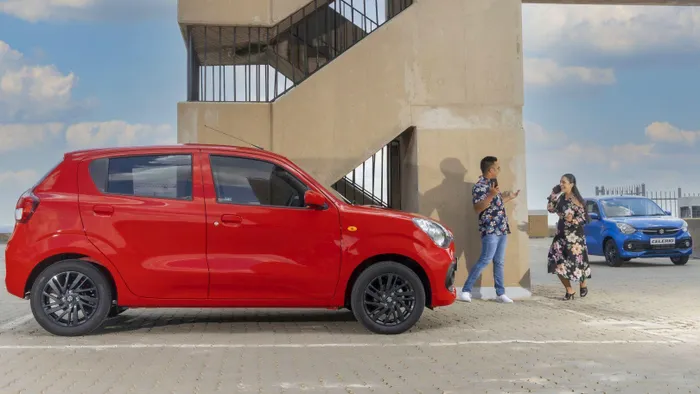
Currenly only five model ranges start below R200,000 in South Africa. Suzuki Celerio shown.
Image: Supplied
Given the relative stability of the rand and an increasing avalanche of imports from China and India, there are many great deals out there for those planning to buy a new car.
While much of the action is concentrated around the R400,000 mark, many South Africans find themselves shopping on a much lower budget, and the good news is that it is still possible to buy a new car for less than R200,000.
ALSO READ: 49% of SA’s cars come from one country, and it’s not China
Just five different model ranges start beneath this mark, but the bad news is that, for the most part, you are only getting the lower-spec variants, although there are a few mid-spec options around the R210,000.
Not all of these cars are born equal, so without further ado, let’s take a look at what you can get for under R200,000, from best to worst.
1. Toyota Vitz
Starting at R178,800, the Toyota Vitz is the vehicle that we feel ticks the most boxes for those seeking a well-engineered product that doesn’t compromise on safety features.
It is reasonably spacious, and the boot swallows a better-than-expected 295 litres.
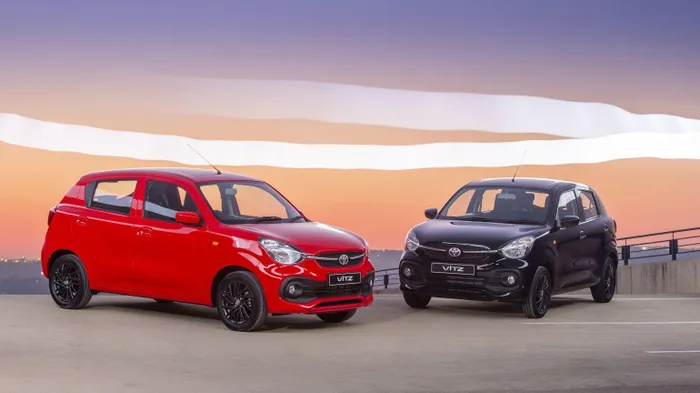
Toyota Vitz
Image: Supplied
Of course, you’re not expecting fireworks at this level, but the Toyota’s 1.0-litre normally aspirated engine, credited with 49kW, has no trouble keeping up with urban traffic. It can get a little revvy at 120km/h on the highway, but that’s par for the course in this segment.
Fuel economy is impressive, with Toyota claiming a combined consumption figure of 4.4 litres per 100km, while our road testing showed up figures just north of 5.0 litres per 100km.
The Vitz doesn’t have an official Global NCAP safety rating, but we are impressed that it comes with six airbags as standard, as well as VSC stability control.
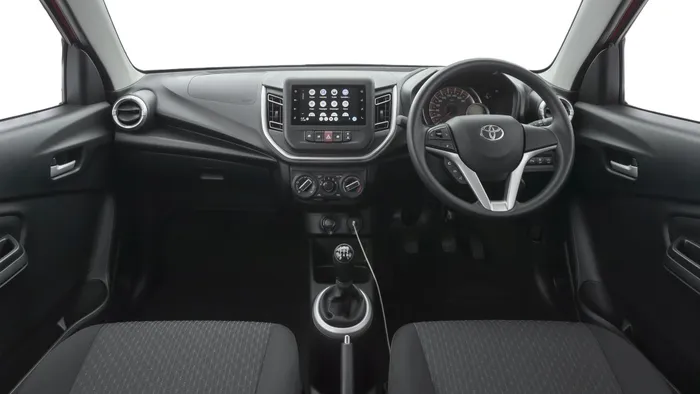
The Vitz cabin is well built and logically laid out.
Image: Supplied
The downside is that only the base trim level comes in at under R200,000, and while it packs the basics like air conditioning, power steering and rear park distance control, it doesn’t come with a radio or touchscreen system, nor does it have electric windows or remote central locking. Great if you’re nostalgic about the 1980s, but most buyers expect these features in 2025.
Thankfully, these items, along with 15-inch alloy wheels, are all fitted to the XR model, which requires you to stretch your budget to R209,900.
Both models are backed by an impressive service plan, which is valid for four services or 60,000km.
Would we recommend the Toyota Vitz? Certainly. But it might be worth stretching the budget to buy the XR with more features. But haggle for a discount.
2. Suzuki Celerio
Absolutely everything that you’ve read above applies here too, because Toyota’s Vitz is nothing more than a rebadged Celerio, built by Maruti Suzuki of India.
The only difference is the pricing, with the Celerio coming in at R10,000 more at base level, as the 1.0 GA costs R188,900. Suzuki’s range-topping GL model is priced close to its Toyota twin, however, at R210,900.
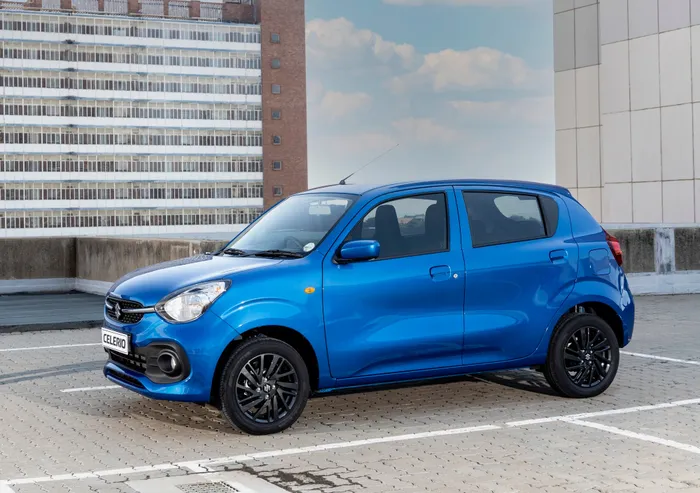
Suzuki Celerio.
Image: Supplied
The Toyota and Suzuki models are identical in terms of specifications and service plans, although Suzuki’s five-year or 200,000km promotional warranty is way superior to Toyota’s three-year / 100,000km coverage.
Should you buy a Celerio? Yes. If the Suzuki dealer gives you a better discount, or if you are brand loyal or prefer existing within that ecosystem, it might be worth considering this over the Vitz.
3. Tata Tigao
Newly introduced to the South African market, the Tata Tiago offers a great deal of car for the money. Bigger than the Suzuki Celerio but smaller than the Swift, it is the largest car in its class and also comes with a more substantial engine, this being a 1.2-litre unit that pushes out 64kW. Average fuel consumption is claimed at 5.0 litres per 100km.
In our humble opinion, it is also the best-looking entry-level vehicle on sale.

Tata Tiago.
Image: Supplied
While it ticks many boxes, the new Tiago does fall short on a few refinement issues. The gearbox and clutch feel a bit sloppy in their operation, and like its aforementioned rivals, it can get buzzy on the freeway.
Some of the interior plastics also appear somewhat cheap and brittle, even by entry-level car standards, and the infotainment system can be finicky.
In terms of specs and pricing, only the 1.2 XM is priced below R200,000, with the base model coming in at R184,900, while the XT is priced at R209,000 in manual guise and R224,900 as an AMT auto. They come with a two-year or 30,000km service plan.
The base version comes with a 3.5-inch infotainment system as well as aircon, remote central locking, park distance control and electric windows, but disappointingly it only has two airbags and no stability control. These items are fitted to the XT, which also has a larger 7.0-inch touchscreen and multi-function steering wheel.
On the upside, the Tigao does boast an impressive four-star Global NCAP safety rating.
Can we recommend the Tata Tiago? At a push, we can. It has a great deal going for it, but there are a few refinement compromises you’re going to have to accept.
4. Suzuki S-Presso
The S-Presso is the smallest car in Suzuki’s line-up, but it’s not really a strong seller, likely because the larger and more refined Celerio only costs R10,000 more.
Despite its diminutive dimensions, with an overall length of just 3,565mm, the S-Presso is surprisingly spacious inside, and the boot capacity is a reasonable 239 litres. Performance is sprightly enough for this application, and Suzuki claims an average fuel consumption figure of just 4.6 l/100km.
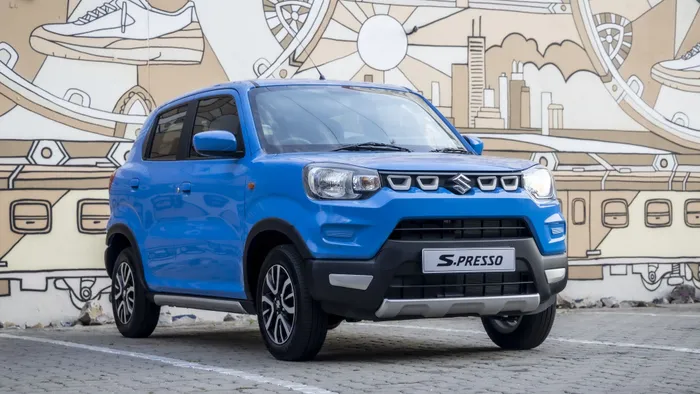
Suzuki S-Presso.
Image: Supplied
You can buy the base GL model for R178,900, with the basics like manual aircon, remote central locking and front electric windows, but you’re far better off opting for the GT+, which adds a touchscreen and alloy wheels for just R11,000 more, at R189,900. A two-year or 30,000km service plan is standard.
The South African-spec model has a Global NCAP safety rating of three stars, and stability control is fitted, but unlike its Celerio sibling, the airbag count is limited to two.

Cheap, but somewhat cheerful: Suzuki S-Presso
Image: Supplied
Should you buy the Suzuki S-Presso? No. While the GL+ offers a good mix of features for the price, it is simply priced too close to the more substantial Celerio and Toyota Vitz models.
5. Renault Kwid
The Renault kwid has been a popular entry-level contender for many years, and a recent range realignment has brought prices down.
The new Kwid Evoltion kicks things off at R178,799, while the techno costs R199,999 and the Climber starts at R212,999. The latter two are also available in AMT auto guise. All come with a two-year/30,000km service plan.
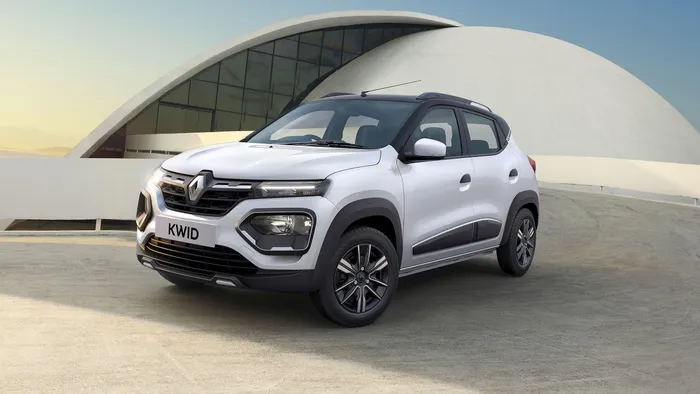
Renault Kwid.
Image: Supplied
Let’s cut straight to the chase. The Renault Kwid is an unrefined car. It feels cheaply built, it’s noisy, there is a fair amount of vibration sent into the cabin and at highway speeds it doesn’t feel particularly stable.
From an engineering perspective, it feels like a victim of excessive cost-cutting, right down to the three-nut wheels.
While it feels light and nimble in city traffic, its 1.0-litre petrol engine, with 50kW, provides sluggish performance. Claimed fuel consumption is 4.9 l/100km.
As for practicality, the 279-litre boot capacity is competitive, but rear legroom is tolerable rather than generous and larger drivers have found the footwell to be somewhat cramped.
But does the Kwid have any redeeming features?
The big drawcard to the Kwid is its feature count, with even the base model packing an 8.0-inch touchscreen infotainment system with Apple CarPlay and Android Auto connectivity, as well as electric windows, aircon and central locking. However, base versions only have dual front airbags, with only the range-topping Climber packing six. None of them have stability control.
The South African-spec Kwid has been crash tested by Global NCAP, which awarded it a two-star rating for adult protection.
Would we recommend the Kwid? No. Many prospective owners will be drawn to its interior features, but as a car, the Kwid just makes no sense when better-engineered vehicles such as the Toyota Vitz can be had for the same price.
What is the monthly repayment on a R200,000 car?
A R200,000 car will cost you around R3,540 per month, over 72 months with a 10% deposit and no balloon payment. This is calculated at an interest rate of 11.25%, which is 1% above prime. Reducing your deposit to zero will increase your instalment to R3,924.
Should you go second-hand?
Buying second-hand always comes with its risks, but if you stick to reputable dealers, you can definitely find a much better car than the ones mentioned above with not too much mileage on the clock.
Good options at this level are the Suzuki Baleno and Toyota Starlet, and a few new-generation Suzuki Swifts, which have vastly better safety credentials than the previous version, are also coming onto the market at under R200,000. We would seriously consider a nearly-new Swift if we were shopping in this price range.
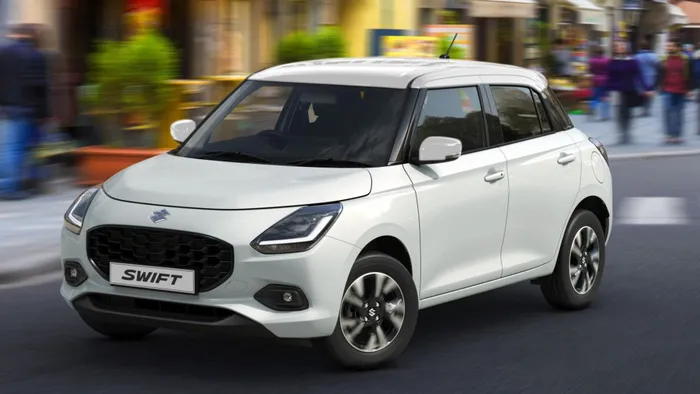
Suzuki Swift.
Image: Supplied
If you’re after an SUV, the pickings are slim at this level, but there are many nearly-new Nissan Magnites going for under R200,000. Just keep in mind that most of them are the normally aspirated 1.0-litre model, which is really underpowered. There is a handful of Kia Sonets available too, potentially a much better buy if you can get your hands on one in good shape.
IOL Motoring
Get your news on the go. Download the latest IOL App for Android and IOS now
Related Topics: